Sony A6700 vs Canon R7 - which APS-C mirrorless camera comes out on top?
Our Sony A6700 vs Canon EOS R7 comparison pitches two flagship APS-C mirrorless cameras head to head!
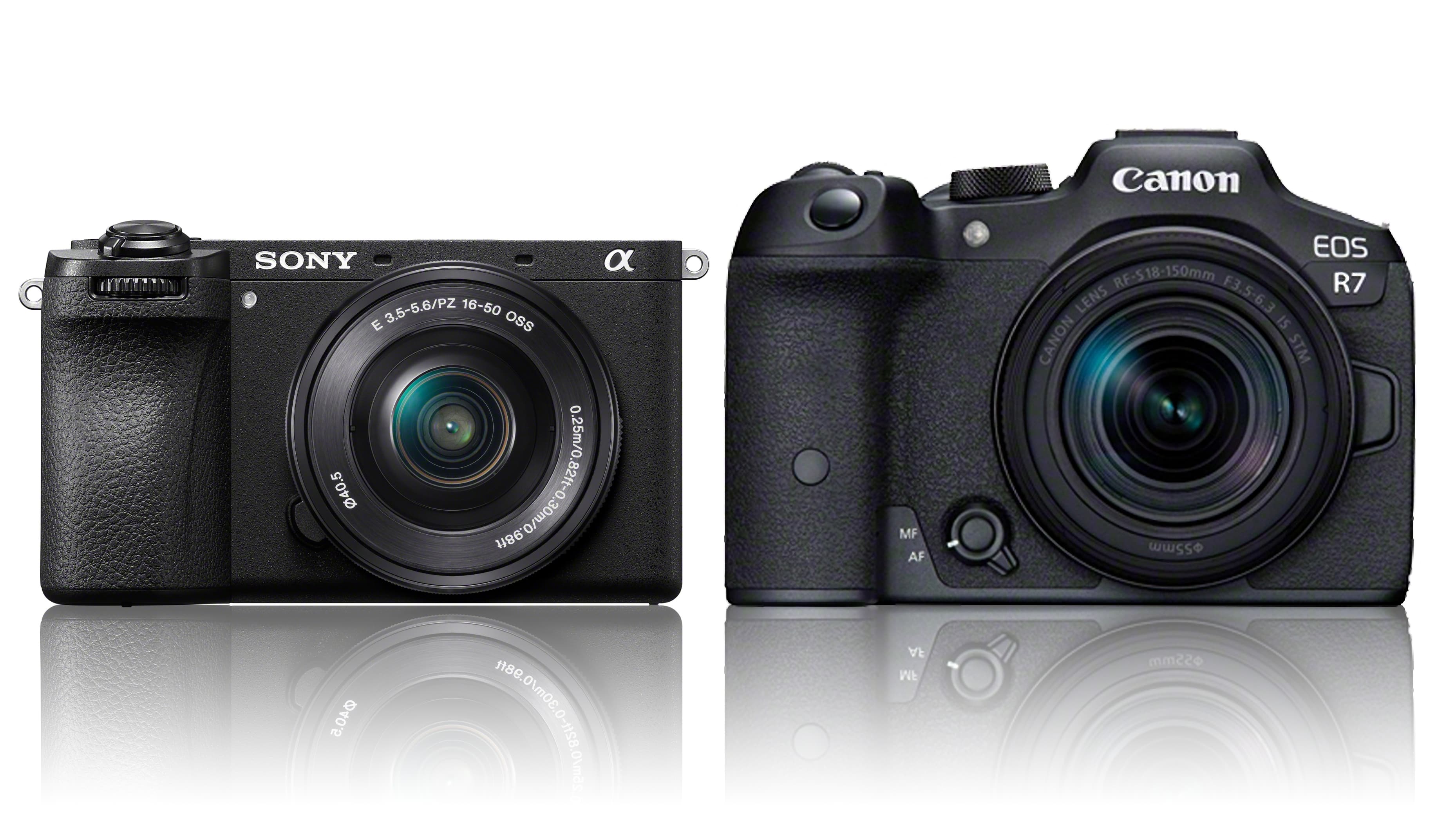
Sony and Canon are both targeting a new generation of hybrid photographers who want to capture both still images and video. Our Sony A6700 vs Canon EOS R7 pits their two latest and best APS-C cameras against each other to see which one comes out on top.
It looks like a close-run contest. Both cameras are candidates for our list of the best hybrid cameras right now, and are among the best cameras for filmmaking on specification alone. The Sony A6700 is one of the best Sony cameras so far, while the Canon EOS R7 in turn counts among the best Canon cameras to buy... though here there is a snag. Lenses.
This is where there is perhaps the biggest difference between these two cameras, and we'll go into more detail on that below.
In other respects, however, this looks like a close match. Both of these cameras have new, higher resolution APS-C sensors, state-of-the-art AI subject recognition AF systems, and video capabilities that would have put them among the best cinema cameras just a few years back.
Perhaps more important, these cameras use the APS-C format, which brings them well within range for keen beginners and enthusiasts. They offer many of the capabilities of full-frame cameras but at a much more affordable price.
So let's get to it, and see how the Sony A6700 and Canon R7 compare…
Sony A6700 vs Canon R7 in 2025
Why you can trust Digital Camera World
1. Sensor/processor

• Sony A6700: 26MP APS-C back-illuminated Exmor R CMOS, BIONZ XR processor, ISO 100-32000 standard, ISO 50-102400 expanded
• Canon EOS R7: 32.5MP APS-C CMOS, DIGIC X processor, ISO 100-32000 standard, ISO 100-51200 expanded
Both cameras nominally use APS-C sensors, but in fact the Canon's is just a millimetre or so smaller, bringing a 1.6x crop factor relative to full frame, compared to 1.5x for the Sony. This is standard for Canon 'APS-C' cameras and does not normally have any practical significance, except when making focal length crop factor calculations.
The Canon wins for resolution, with 32.5 megapixels vs the 26 megapixels of the Sony A6700. It's a small difference, but if you're looking for the best, the Canon wins this particular battle.
On the other hand, the Sony A6700 does have a slightly higher expanded sensitivity range, which you might think is an effective counter to the Canon's resolution. They are both fairly closely matched, at any rate.
2. Lens mount
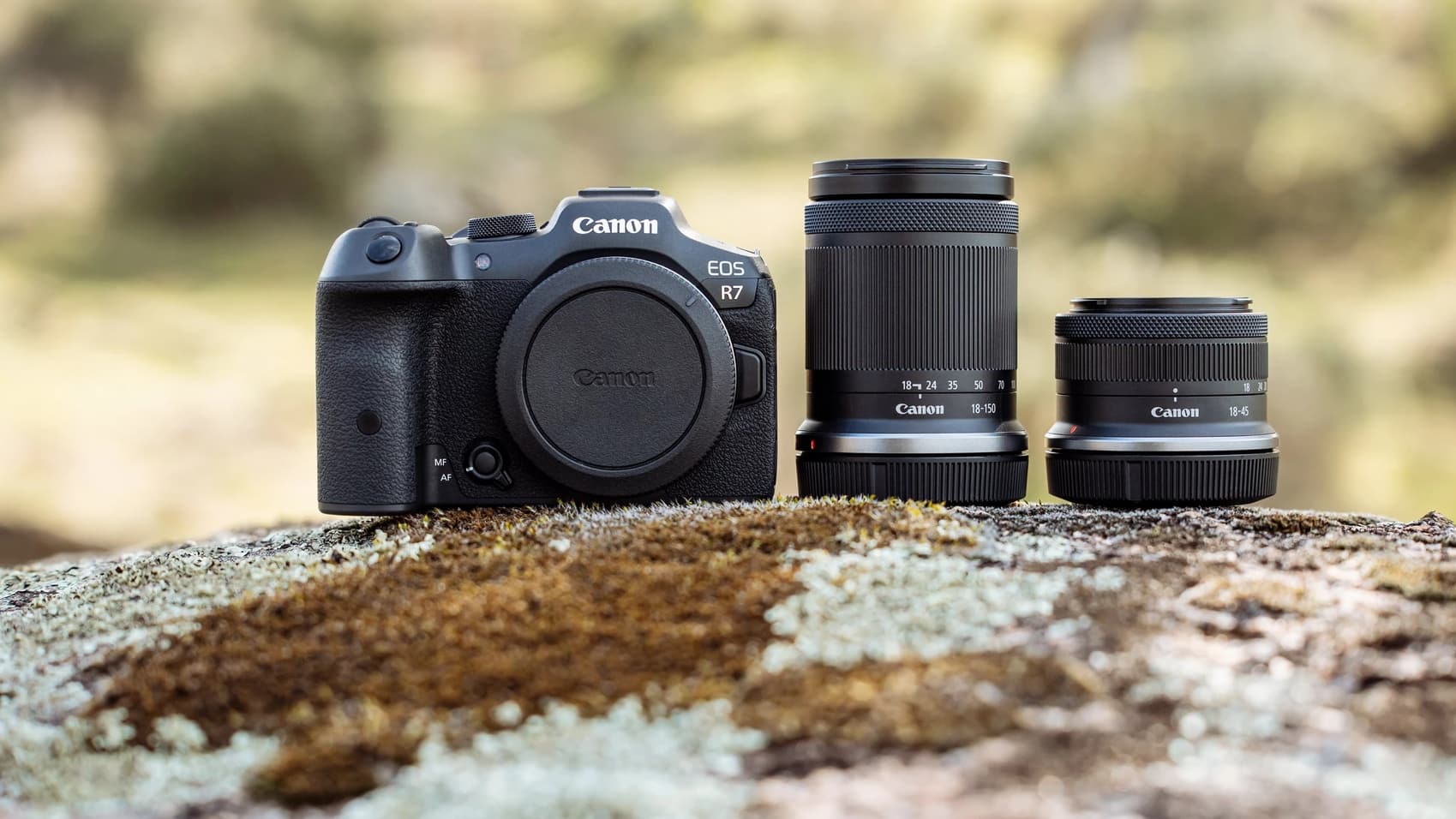
• Sony A6700: Sony E-mount, FE compatible
• Canon EOS R7: Canon RF-S, RF compatible, EF/EF-S lenses via adaptor
The Sony A6700 features the ubiquitous Sony E mount, used across Sony's camera range, from its APS-C and full frame mirrorless models, right through to its cinema line. Sony makes a good range of lenses specifically for the smaller APS-C models, so there's a good choice of fast primes and ultra-wide zooms.
Canon EOS R7 buyers will not be so lucky. At the time of writing, Canon makes just three 'native' RF-S lenses – a short standard zoom, a longer standard zoom and a telephoto zoom. There are no fast primes, no ultra-wide zooms. The lack of native RF-S lenses wider than 29mm equivalent (18mm on the RF-S standard zooms) effectively limits or rules out the EOS R7 for walk-and-talk vlogging, travel, architecture, interiors and landscapes – that's a huge swathe of photography and video genres and users. The low-cost Canon RF 16mm f/2.8 full frame lens might help, but only a little, giving an effective focal length of around 26mm on the EOS R7.
One solution is to use one of the four Canon EF-EOS R Mount Adapters to fit old DSLR lenses, but that seems like a pretty poor workaround. Another is to hang on and hope that Canon has some wider RF-S lenses in the pipeline. Right now, Canon seems to be pitching its full frame models as an upgrade path for users of these APS-C cameras to get, among other things, wider angles of view, so that's not encouraging for EOS R7 buyers.
3. Autofocus
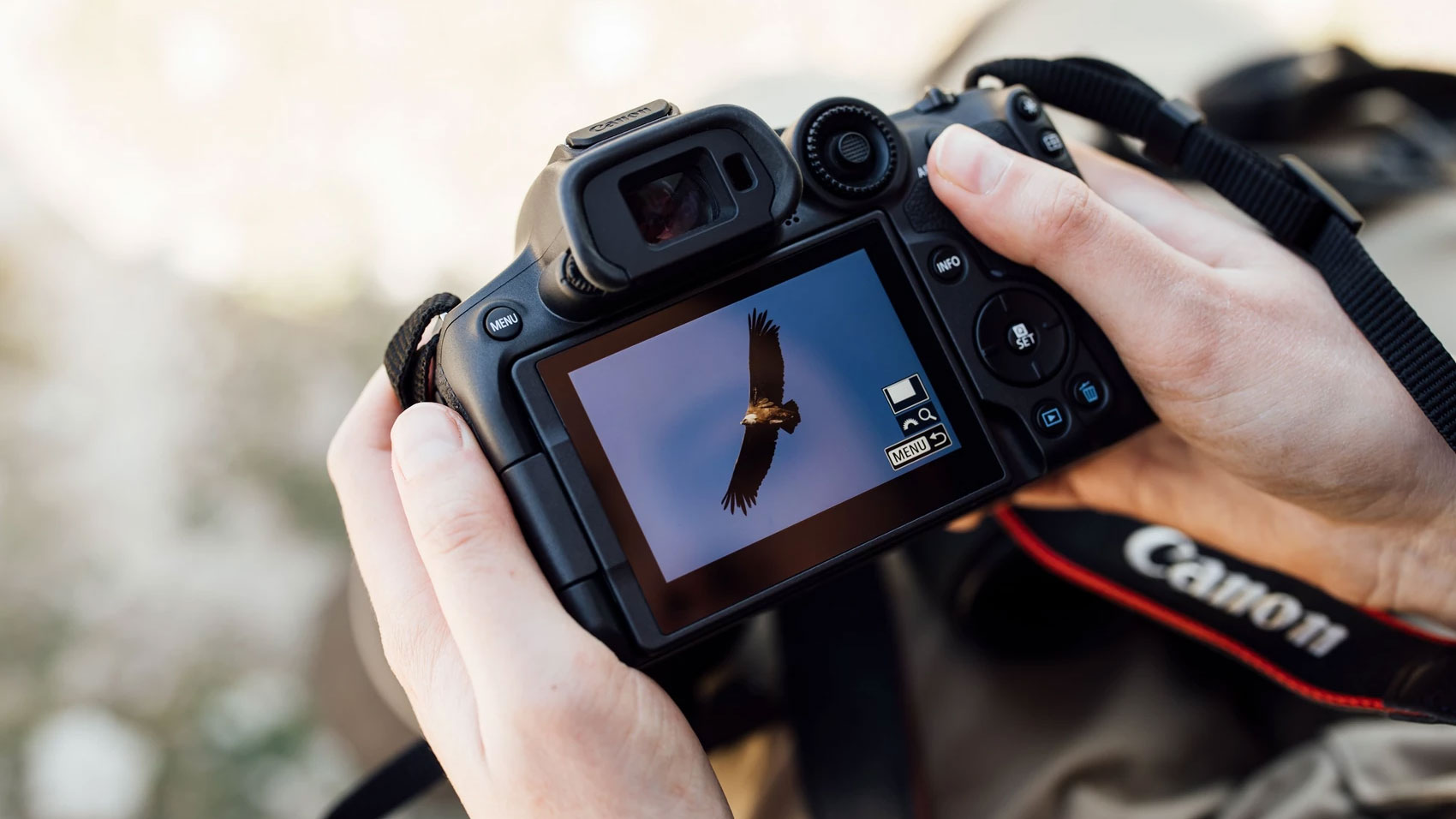
• Sony A6700: AI processing unit from A7R V, Human, animal, bird, insect, car/train, and airplane recognition for both stills and video, Still images: Max. 759 points (phase-detection AF) Movies: Max. 495 points (phase-detection AF)
• Canon EOS R7: Dual Pixel CMOS AF II, 651-zone, 100% coverage, Deep learning AI subject recognition over 100% of frame, eye priority, then head, then body, birds, cats and dogs, vehicles, choose subject type priority
AI autofocus is where camera makers have made massive strides, using deep learning AI to incorporate sophisticated subject recognition and tracking and then filtering this high-end tech down to affordable mid-range cameras like these.
With Sony's system you have to tell the camera what subject type you want to look for and track, but Canon's can find all kinds of subject for itself – and you can even tell it how you want it to prioritise different subject types.
Sony's AF system uses its tried and trusted hybrid phase/contrast-detect AF, while Canon uses its unique Dual Pixel CMOS AF, where every photosite is effectively a phase detect AF sensor.
Both systems work extremely well, and in the absence of any in-depth side-by-side testing data right now, we're going to say it's too close to call. It will probably come down to which one 'gels' best with the way you shoot.
4. Video
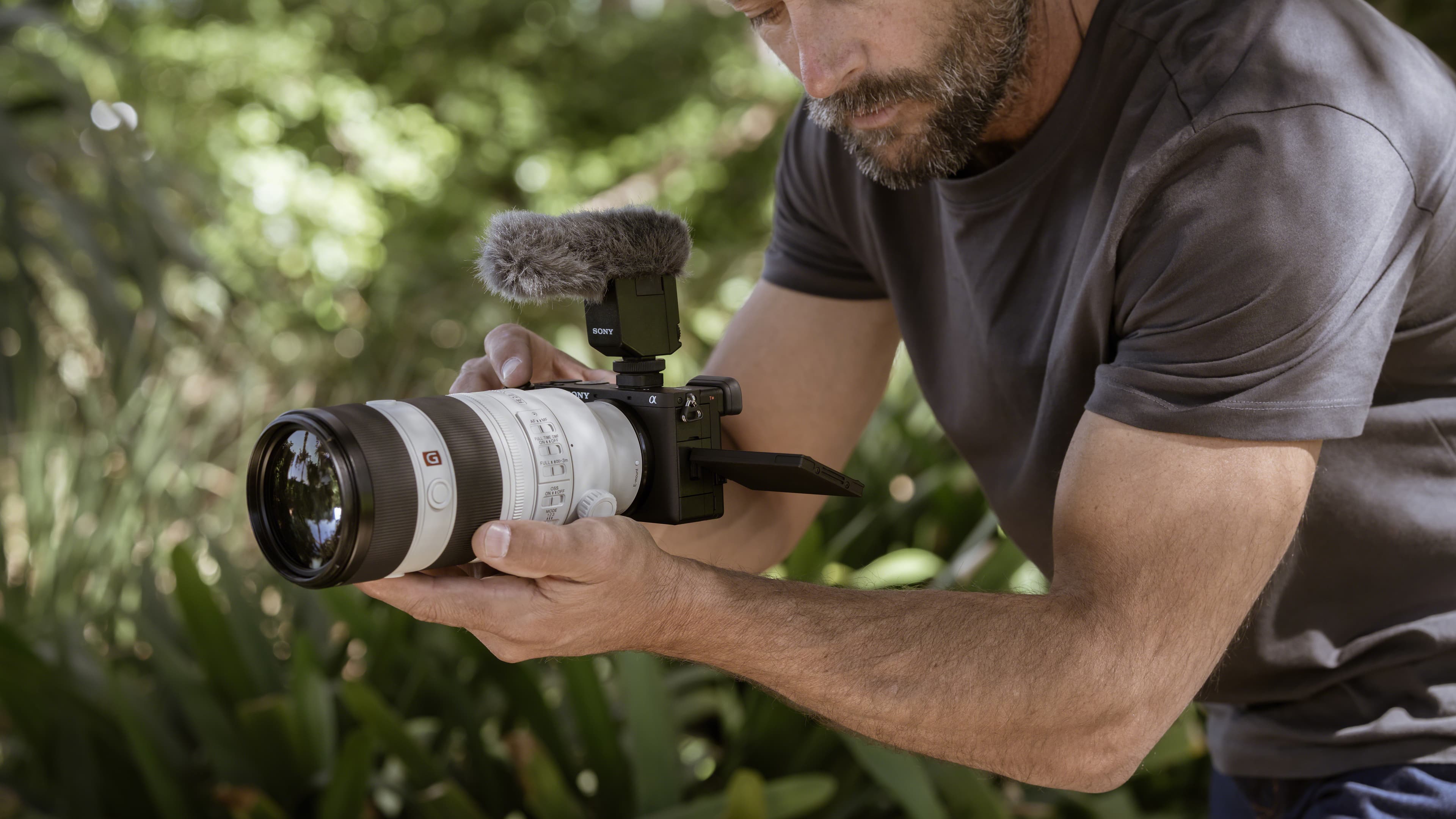
• Sony A6700: 4K 30/60p with 6K oversampling, 120p with crop, 4:2:2 10-bit internal recording, 14+ stops dynamic range (S-Log3) , S-Cinetone picture profile, AI-driven Auto-Framing (cropped from a 4K resolution image)
• Canon EOS R7: 4K 30p oversampled, 4K 60p line skipping or 1.8x crop, up to 120p FHD, 4:2:2 10-bit internal recording, Canon Log 3
In terms of headline video specs, these cameras look pretty closely matched. Both offer 4K 60p full width capture and up to 120p high speed video. But as ever with video specs, the devil is in the detail, and this reveals that the Sony is better, and by some margin.
While the EOS R7 can capture full width 4K 60p video, it can only do it by line-skipping/pixel binning to reduce the readout/processing overhead, while the 4K 60p video captured by the A6700 is from full width oversampled 6K data. You can get higher quality 4K 60p video from the Canon using a hefty 1.8x crop mode, but if you can accept a crop then the A6700 doubles the frame rate with up to 4K 120p capture.
Neither camera offers 'open gate' 6K capture, even though the sensors have the resolution for it, but the Sony A6700 definitely wins the 4K capture battle. The EOS R7 is a decent hybrid camera for casual video shooters, but filmmakers will want the A6700.
5. Stabilization

• Sony A6700: 5-axis IBIS, up to 5 stops compensation, Active Mode digital stabilization
• Canon EOS R7: 'Collaborative' 5-axis IBIS and lens stabilization, up to 7 stops with RF-S 18-150mm F3.5-6.3 IS STM, 8 stops with other RF lenses, Movie Digital IS
Both cameras have 5-axis IBIS, and the Canon's is designed to work IS-equipped lenses for up to 8 stops of compensation – though Canon doesn't quote the compensation offered just by the IBIS alone. Many Sony lenses have image stabilization too, and both cameras add optional digital stabilization on top. On paper at least, there's nothing to choose between these cameras for stabilization.
6. Continuous shooting
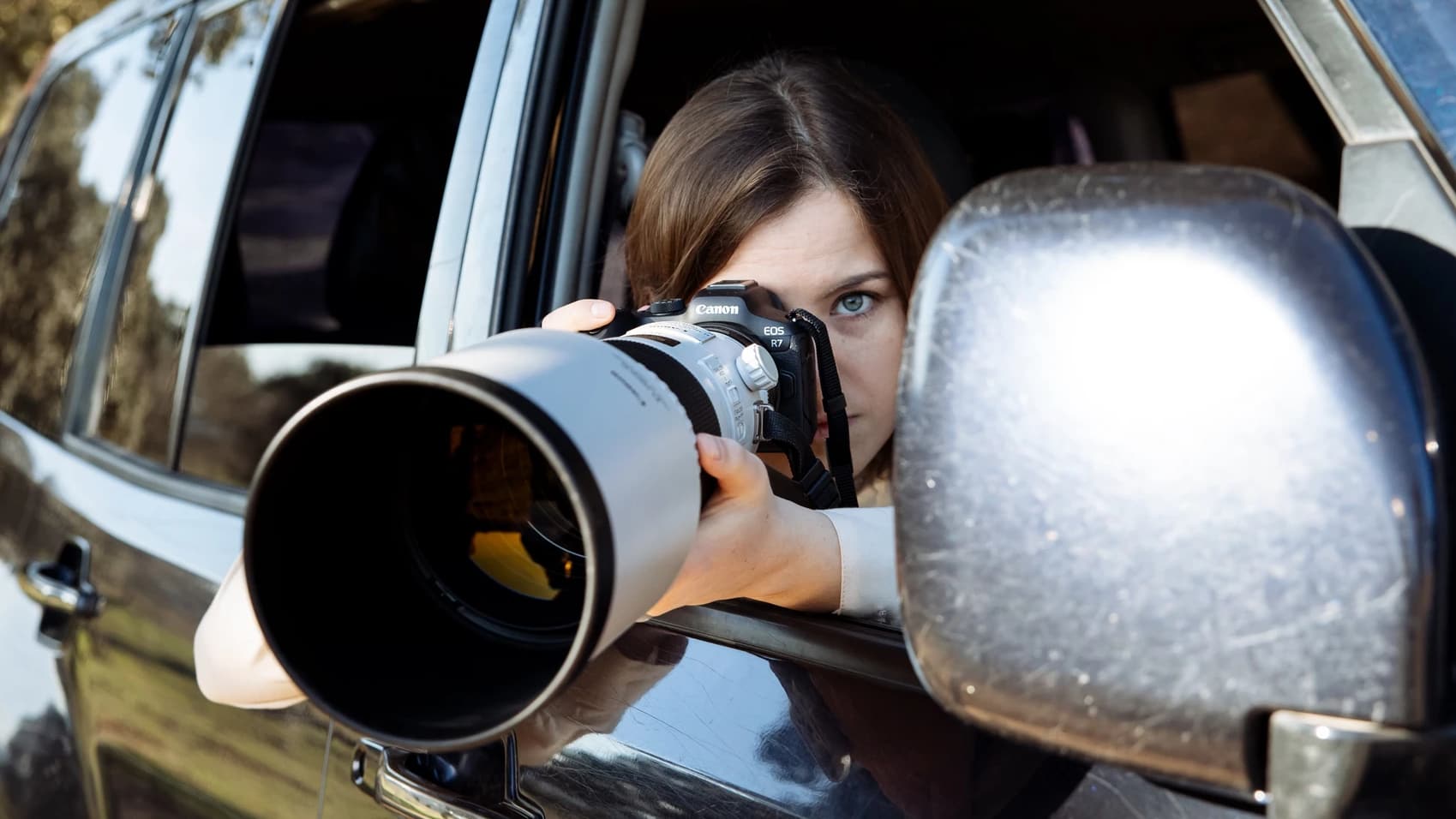
• Sony A6700: 11fps (1000+ JPEG Fine/Standard, 59 raw)
• Canon EOS R7: 15fps (224 JPEG, 51 RAW, 187 CRAW), 30fps with electronic shutter (126 JPEG, 42 RAW, 93 CRAW), inc RAW Burst (single file), 0.5sec Pre-shooting mode
This is where the Canon streaks ahead. The Sony a6700 offers 11fps burst shooting with its mechanical shutter, a figure we're used to seeing with past A6000-series cameras, so it doesn't look as if Sony has made any great effort to move forward this model's burst shooting capabilities. The buffer capacity for JPEG images is very good, but only average for raw files.
The Canon EOS R7 is much faster. It can shoot at 15fps with its mechanical shutter and an impressive 30fps with its electronic shutter. Having said that, its buffer capacity is scarcely better than the Sony's, and actually rather worse for JPEGs. The EOS R7 is saved somewhat by its compressed CRAW raw format, which brings very little quality loss but much better buffer capacities for raw shooters. Even so, despite its speed, the EOS R7 is not in the same league as a pro sports camera, being limited to pretty short bursts.
7. Viewfinder and screen
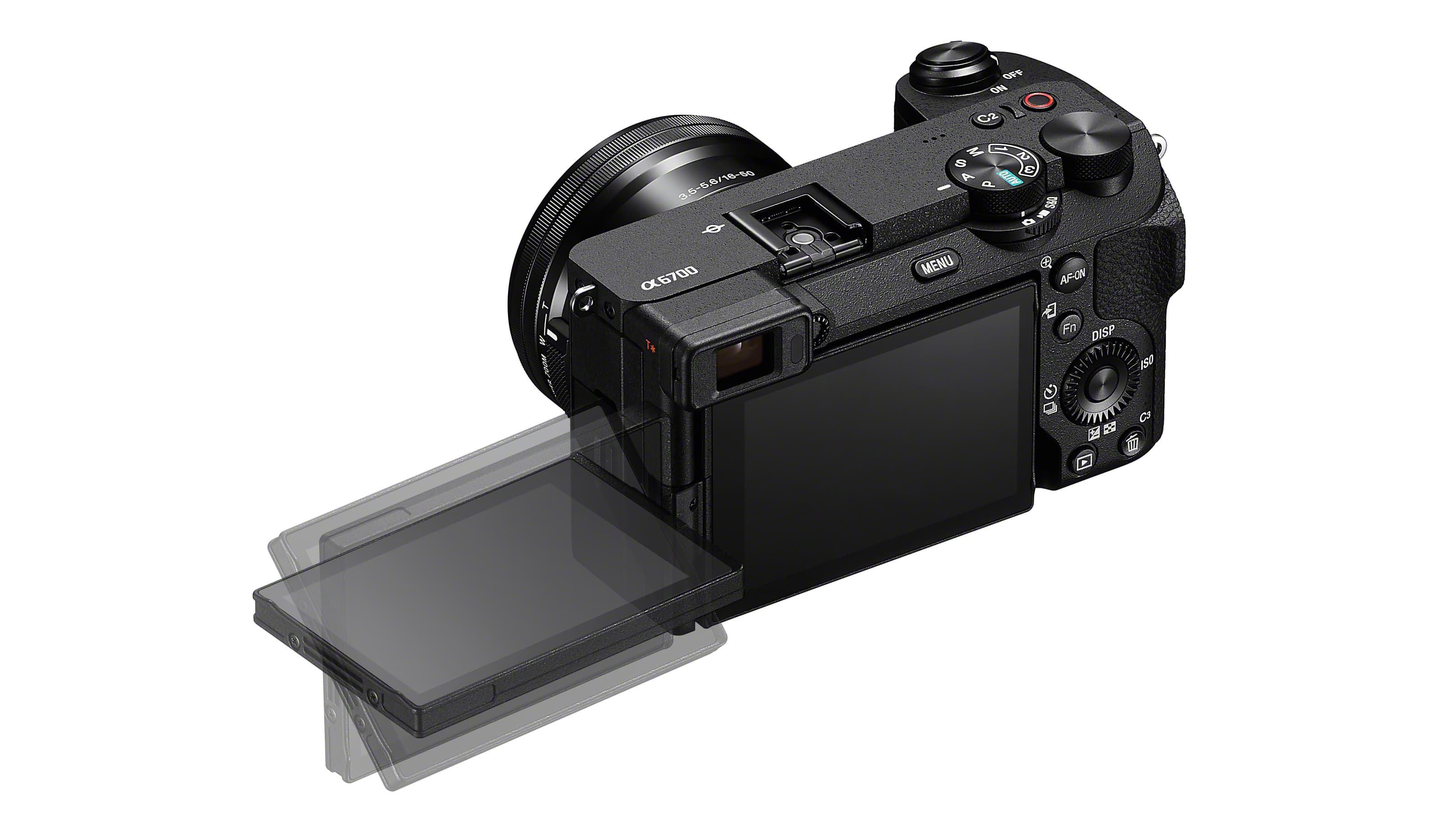
• Sony A6700: 0.39-inch, 2.36m dot EVF, 1.07x magnification, 3-inch vari-angle touchscreen, 1,036k dots
• Canon EOS R7: 0.39-inch, 2.36m dot EVF, 1.15x magnification, 2.95-inch vari-angle touchscreen, 1.62m dots
We'll call this one a draw. Both cameras use 0.39-type EVFs with 2.36m dot resolution, and while the Canon has a slightly higher magnification, it's close enough that you're unlikely to notice.
On the back of the camera, the Sony and Canon both have flip-out vari-angle touchscreens. The Canon's is slightly smaller at 2.95 inches versus 3 inches on the Sony, but it has a higher resolution at 1.62m dots versus 1.036m dots on the Sony. We've said this before, but Sony is typically a bit mean with its screen specs.
8. Storage
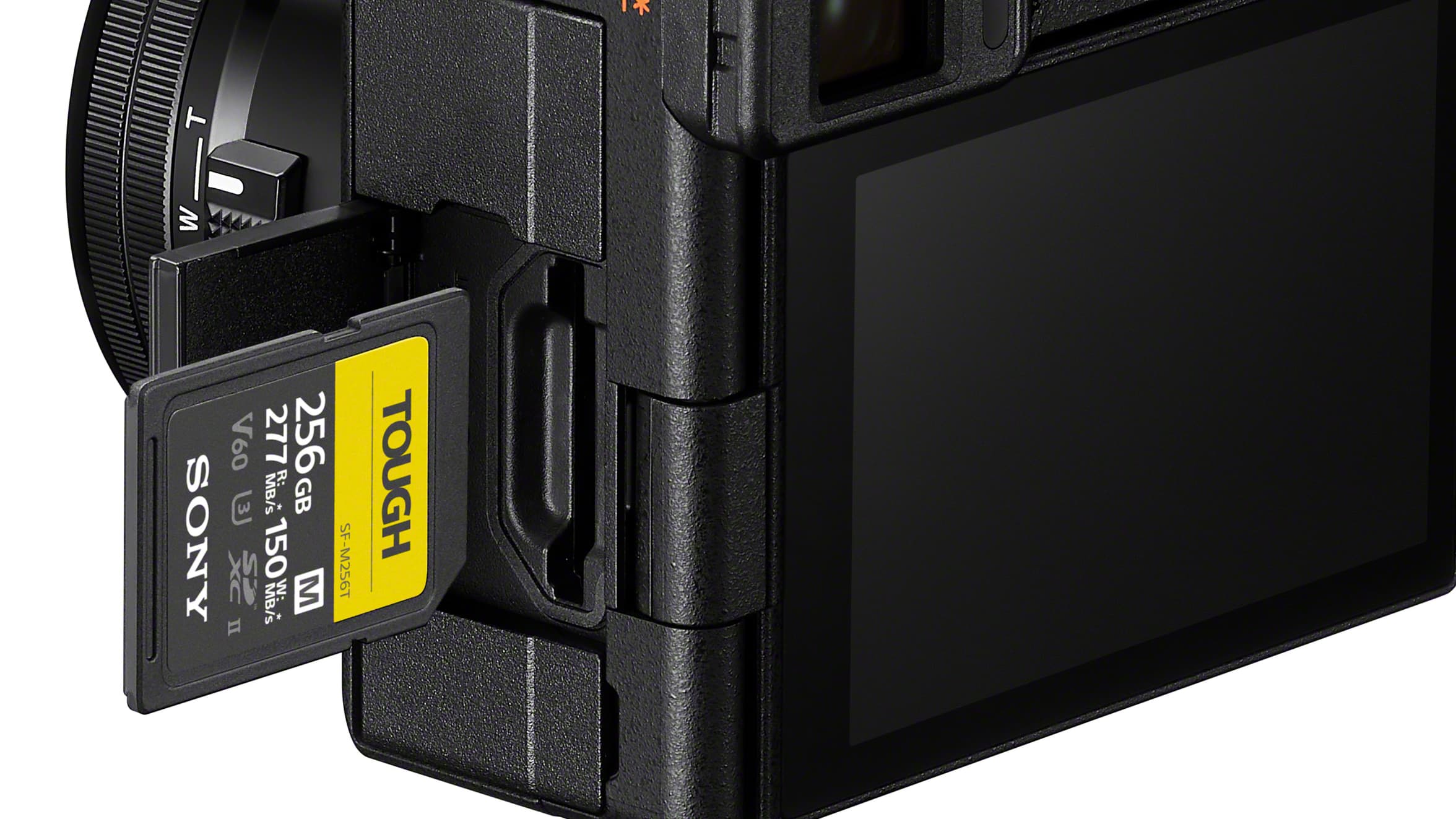
• Sony A6700: 1x SD UHS II
• Canon EOS R7: 2x SD UHS II
If you like a camera to have two card slots, then the EOS R7 is for you. It's a physically bigger camera, and has the space to accommodate two SD UHS II card slots versus the single memory card slot on the Sony. On its own it's hardly enough to justify choosing the Canon over the Sony, but if you're struggling to reach a decision, this could be a decisive factor.
9. Power
• Sony A6700: NP-FZ100, Approx. 550 shots (Viewfinder) / Approx. 570 shots (LCD monitor) (CIPA standard), USB Type C PD
• Canon EOS R7: LP-E6NH, 770 shots LCD, 500 shots EVF, USB Type C PD
We've noted before that the Sony A6700 doesn't seem to get as much life out of its NP-FZ1000 battery as other Sony cameras – though its 500+ shot battery life is still good for a camera in this class. The EOS R7 is slightly behind if you use the EVF exclusively, but stretches out a decent advantage over the A6700 when you use the rear screen.
10. Connectivity
• Sony A6700: Multi-Interface (MI) Shoe compatible with digital audio interfaces and new ECM-M1 shotgun mic, USB Type C, HDMI micro connector (Type-D), 3.5mm mic, 3.5mm headphone, Remote, Wi-Fi, Bluetooth
• Canon EOS R7: USB Type C, HDMI micro connector (Type-D), 3.5mm mic, 3.5mm headphone, Remote, Wi-Fi, Bluetooth
The Sony A6700 and EOS R7 have the same set of connections, with one difference – the A6700 also has the Sony Multi-Interface (MI) hotshoe for direct digital connection with Sony's own digital mics, including the new ECM-M1 digital shotgun mic, for example. This will only matter if you're into the Sony video ecosystem in a big way and want to use the company's own digital mics; otherwise, it's a small difference.
Both cameras have 3.5mm analog mic input and headphone output sockets for audio monitoring, and both have HDMI output, though using the smaller size HDMI Type D micro connector rather than the full size and more secure HDMI connector favored by serious filmmakers.
11. Size and weight
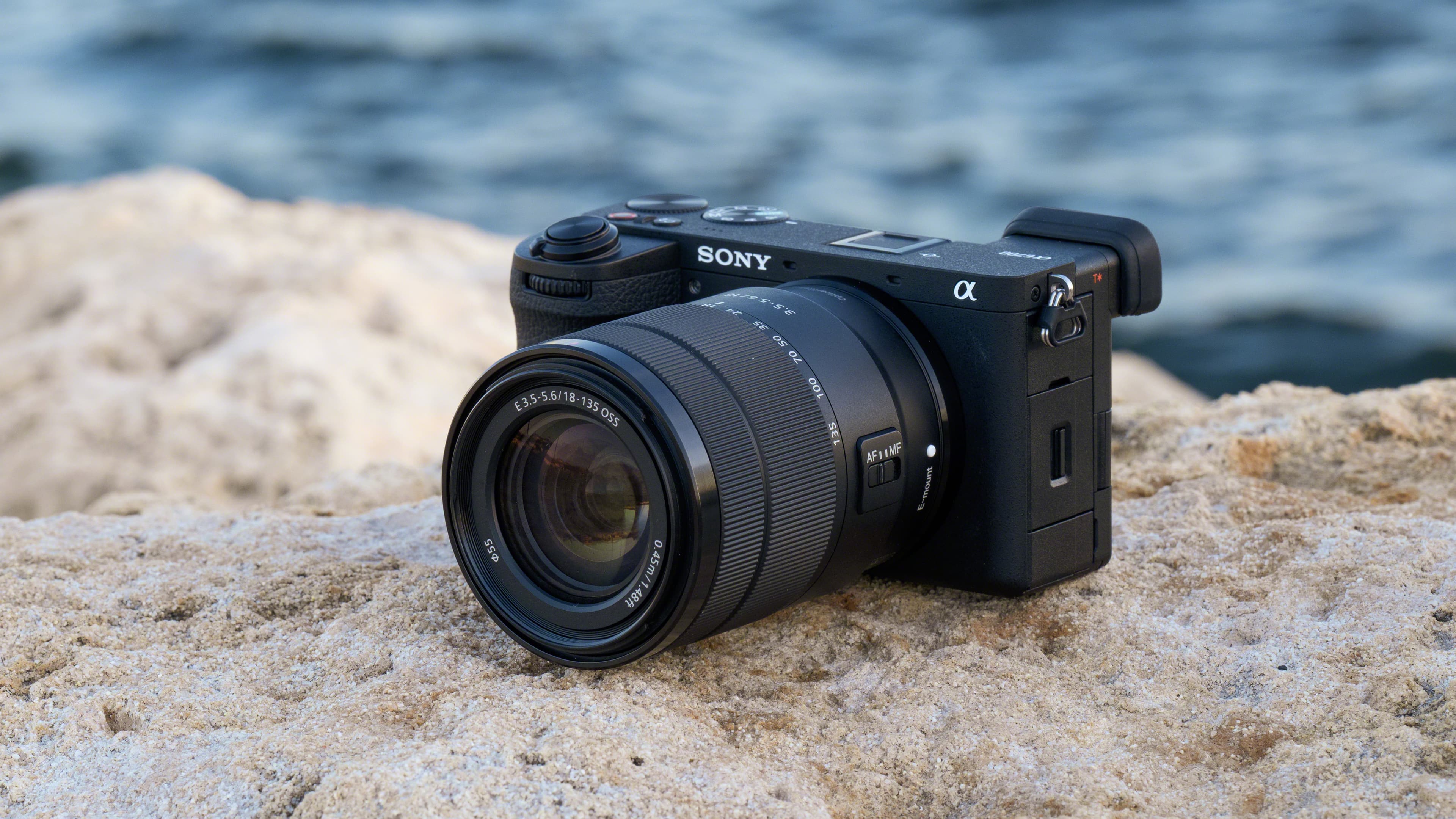
• Sony A6700: 122.0 x 69.0 x 75.1mm, 409g
• Canon EOS R7: 132.0 x 90.4 x 91.7mm, 530g
It's pretty clear from the specs alone that the Sony A6700 is the smaller and lighter camera. Even so, the EOS R7 is not that big and certainly not that heavy. More important than shaving off a few millimetres and grams here and there is how these cameras feel in the hand and how they handle, especially with different kinds of lenses fitted.
The A6700 is the smaller camera, and will fit into a smaller space in your camera bag, but it's not necessarily the nicest to hold or the most ergonomic. Sony fans may insist it's fine, other users may feel different. The EOS R7 is a little larger, but it has smoothly contoured edges and a hold that some users might prefer, especially with larger lenses.
These are two cameras that you definitely need to pick up and hold to see which suits you. This matters a lot more than the differences in size and weight, even though these might appear significant.
12. Price
• Sony A6700: $1398/£1449 body only, $1498/£1549 with 16-50mm, $1798/£1799 with 18-135mm
• Canon EOS R7: $1399/£1449 body only, $1799/£1799 with 18-150mm
It's almost as if Sony and Canon have used the same market research to work out what people will pay and what features they will expect for their money.
In body-only form, and at the time of writing, the Sony A6700 and Canon EOS R7 cost the same. You can also get the A6700 with Sony's compact 16-50mm power zoom lens, which is small, but not the greatest, to be fair, or the 18-135mm f/3.5-5.6 which is actually quite good. The EOS R7 can also be bought with Canon's equivalent Canon RF-S 18-150mm f/3.5-6.3 IS STM, which is longer again, though with a smaller maximum aperture at full zoom.
Cost-wise, it's so close at the time of writing that this isn't even a factor.
Sony A6700 vs Canon EOS R7: conclusions

This has been a very interesting comparison to write. Very often, the cameras we compare are so close in features, specifications and performance that it's difficult to reach any final, definite conclusions. But not this time.
This time, we're going to say put the specs to one side for a moment, and talk about lenses. The lack of native RF-S lenses for the EOS R7 is, for us, a crippling drawback. There is nothing you can buy from the Canon RF lens range that is wider than an effective 29mm focal length, which is barely wide at all by today's standards. You COULD pay a lot of money for an ultra-wide full frame Canon RF lens, but even here you're not going to get anything wider than around 22mm equivalent, and that's with the Canon RF 14-35mm f/4 L IS USM lens, which alone costs as much as the EOS R7 body. And you CAN use older EF-S DSLR lenses via an adapter. But sorry, Canon, this is just not right. The EOS R7 might be a good 'second' camera for a full frame EOS R-system user, but it's not a system camera in its own right.
For this reason alone, the Sony A6700 is an easy winner in this head-to-head.
But what if we put the lens situation to one side for a moment and concentrate only on the camera bodies? We can do this if your main interest is 'normal' and longer focal lengths and in particular action, wildlife and sports photography at longer range.
Here, the Sony A6700 definitely wins for video features, while the Canon EOS R7 scores for resolution and burst speeds. The A6700 is a more accomplished hybrid camera, while the EOS R7 is better for wildlife and sports – and is pretty handy for video too.
But what this comparison shows us is that while these two cameras appear similarly specified on paper, their actual potential is very, very different. The Sony A6700 is a complete system camera for all types of photographer, while the EOS R7 is not.
Get the Digital Camera World Newsletter
The best camera deals, reviews, product advice, and unmissable photography news, direct to your inbox!

Rod is an independent photography journalist and editor, and a long-standing Digital Camera World contributor, having previously worked as DCW's Group Reviews editor. Before that he has been technique editor on N-Photo, Head of Testing for the photography division and Camera Channel editor on TechRadar, as well as contributing to many other publications. He has been writing about photography technique, photo editing and digital cameras since they first appeared, and before that began his career writing about film photography. He has used and reviewed practically every interchangeable lens camera launched in the past 20 years, from entry-level DSLRs to medium format cameras, together with lenses, tripods, gimbals, light meters, camera bags and more. Rod has his own camera gear blog at fotovolo.com but also writes about photo-editing applications and techniques at lifeafterphotoshop.com
